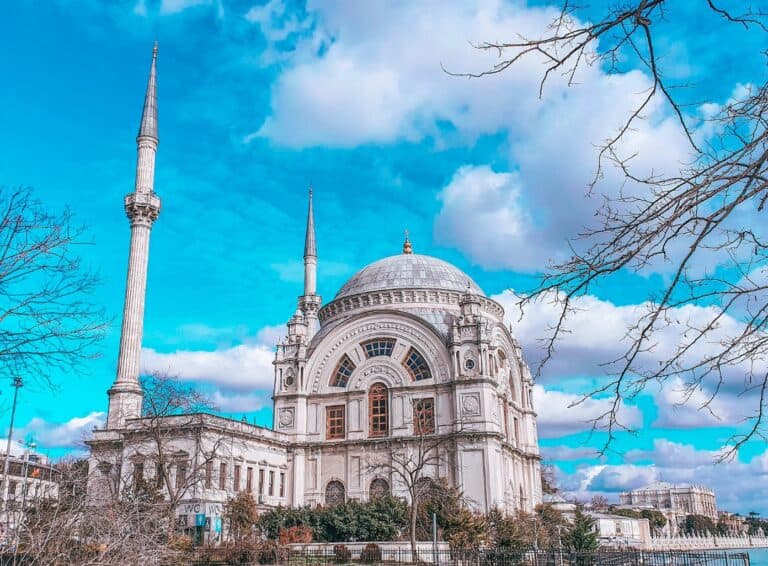Turkey’s Architectural Heritage
Turkey’s architectural wonders are a testament to its rich history and diverse cultural influences. From ancient marvels to Islamic gems and iconic structures of modern Turkey, the country is a treasure trove of architectural beauty. Let’s explore the introduction to Turkey’s architectural wonders and the influence of various civilizations on its architectural heritage.

Introduction to Turkey’s Architectural Wonders
Turkey boasts a captivating blend of architectural styles that have evolved over centuries. Its architectural wonders are a reflection of the country’s cultural and historical significance. From ancient civilizations to modern influences, Turkey’s architectural landscape offers a captivating journey through time.
With its strategic location bridging Europe and Asia, Turkey has been a crossroads of civilizations, each leaving its mark on the architectural tapestry of the country. The diverse range of architectural styles found in Turkey includes ancient, Byzantine, Roman, Ottoman, Seljuk, and modern influences.
Exploring Turkey’s architectural wonders is not only an opportunity to witness breathtaking structures but also to delve into the stories and traditions that shaped them. From grand palaces and mosques to ancient ruins and cave dwellings, Turkey’s architectural wonders offer a glimpse into the country’s vibrant past.
Influence of Various Civilizations
Turkey’s architectural heritage has been shaped by the influence of various civilizations that once thrived within its borders. Each civilization has left its architectural legacy, contributing to the rich tapestry of styles seen across the country.
Ancient civilizations like the Hittites, Byzantines, and Romans have left behind architectural marvels that stand as a testament to their advanced engineering and artistic prowess. These ancient structures, such as the Hittite temples, Byzantine churches, and Roman amphitheaters, continue to captivate visitors with their grandeur and historical significance.
Islamic architectural wonders in Turkey, particularly those from the Ottoman, Seljuk, and Mamluk periods, showcase the intricate beauty and spiritual significance of Islamic art and design. From the iconic domes and minarets of Ottoman mosques to the elegant arches and geometric patterns of Seljuk architecture, these structures exemplify the architectural achievements of Islamic civilizations.
The architectural wonders of modern Turkey reflect the country’s contemporary design sensibilities. Contemporary Turkish architecture combines innovative concepts with a deep respect for tradition, resulting in unique and eye-catching structures that blend seamlessly with their surroundings.
By exploring the architectural wonders of Turkey, visitors can gain a deeper appreciation for the country’s rich history and cultural diversity. Whether it’s the architectural diversity of Istanbul, the cave dwellings of Cappadocia, or the ancient ruins of Ephesus, Turkey offers a remarkable journey through time.
Continue reading to discover more about specific architectural wonders in Turkey, including Istanbul, Cappadocia, and Ephesus in our article on Turkey’s architectural wonders.

Ancient Architectural Marvels
Turkey’s architectural heritage is rich and diverse, with a fascinating array of ancient architectural marvels. The architectural styles of different civilizations have left an indelible mark on the landscape of Turkey. In this section, we will explore three prominent ancient architectural styles: Hittite architecture, Byzantine architecture, and Roman architecture.
Hittite Architecture
Hittite architecture, dating back to the Bronze Age, showcases the remarkable achievements of the Hittite civilization. Known for their impressive fortifications and temples, the Hittites constructed monumental structures using stone and mud-brick materials. These architectural wonders include the famous Hattusa, the capital city of the Hittite Empire, which features imposing city walls, grand gateways, and meticulously planned urban layouts.
Byzantine Architecture
Byzantine architecture flourished during the Byzantine Empire, which spanned from the 4th century to the 15th century CE. This architectural style draws heavily from Roman and Greek influences, with a focus on grand domes, intricate mosaics, and ornate ornamentation. The Hagia Sophia in Istanbul is a shining example of Byzantine architecture, renowned for its massive dome and exquisite Byzantine mosaics. The Hagia Sophia has had a lasting impact on architectural styles and is now a UNESCO World Heritage Site.
Roman Architecture
Turkey is home to numerous remnants of Roman architecture, showcasing the grandeur and engineering prowess of the Roman Empire. Roman architecture in Turkey encompasses amphitheaters, aqueducts, temples, and grand cities. The well-preserved Ephesus is a prime example of Roman architecture in Turkey, boasting impressive structures such as the Library of Celsus and the Great Theatre. Ephesus offers a glimpse into the architectural ingenuity of the Roman Empire and provides a unique opportunity for visitors to step back in time.
These ancient architectural marvels serve as a testament to the rich history and cultural heritage of Turkey. By exploring the remnants of Hittite, Byzantine, and Roman architecture, visitors can immerse themselves in the extraordinary achievements of these civilizations and gain a deeper understanding of Turkey’s architectural legacy. To explore more architectural wonders in Turkey, continue reading our articles on Turkey’s architectural wonders and plan your visit accordingly.
Islamic Architectural Gems
Turkey is renowned for its rich Islamic architectural heritage, featuring stunning examples from various periods. Let’s explore three prominent styles of Islamic architecture found in Turkey: Ottoman architecture, Seljuk architecture, and Mamluk architecture.
Ottoman Architecture
Ottoman architecture flourished during the centuries-long reign of the Ottoman Empire. It is characterized by its grandeur, intricate ornamentation, and a harmonious blend of various architectural influences. Ottoman architects incorporated elements from Byzantine, Seljuk, and Islamic architectural styles, creating a unique and recognizable aesthetic.
One of the most iconic examples of Ottoman architecture is the Hagia Sophia in Istanbul. Originally built as a Byzantine church, it was later converted into a mosque during the Ottoman period. The Hagia Sophia showcases the empire’s mastery in architectural design, with its massive dome, towering minarets, and stunning interior adorned with intricate mosaics and calligraphy.
Seljuk Architecture
Seljuk architecture emerged during the Seljuk Sultanate of Rum, a medieval Turkish state that ruled Anatolia from the 11th to the 13th century. Seljuk architecture is characterized by its monumental structures, intricate stone carvings, and the extensive use of geometric patterns.
One of the finest examples of Seljuk architecture is the Great Mosque of Divriği in Sivas. This UNESCO World Heritage site showcases the mastery of Seljuk craftsmen, with its exquisite stone carvings, geometric motifs, and intricate brickwork. The mosque’s unique double minaret design and the intricately decorated portal are testaments to the architectural prowess of the Seljuk dynasty.
Mamluk Architecture
Mamluk architecture, originating from the Mamluk Sultanate in Egypt and Syria, also left its mark on Turkish soil. During the Mamluk period, Turkish architects influenced by the Mamluk style developed a distinct architectural tradition known as Turkish Mamluk.
One of the most notable examples of Turkish Mamluk architecture is the Mausoleum of Mevlana in Konya. This magnificent structure is the final resting place of the renowned Sufi poet and philosopher, Mevlana Rumi. The mausoleum features an octagonal plan, intricate tile work, and a striking turquoise dome, reflecting the influence of both Mamluk and Seljuk architectural styles.
These Islamic architectural gems in Turkey are not only a testament to the country’s rich history but also an embodiment of the artistic and cultural achievements of their respective periods. Exploring these architectural wonders provides a glimpse into the grandeur and beauty of Islamic architecture.
Iconic Structures of Modern Turkey
Turkey’s architectural wonders are not limited to ancient and historical marvels. The country is also home to impressive examples of contemporary Turkish architecture that showcase the nation’s modern design prowess. These structures blend innovation, functionality, and cultural inspiration to create architectural masterpieces.
Contemporary Turkish Architecture
Contemporary Turkish architecture reflects the country’s dynamic spirit, combining traditional elements with modern design principles. Architects draw inspiration from Turkey’s rich cultural heritage, incorporating elements from various architectural styles and periods.
With its unique geographical location bridging Europe and Asia, Istanbul stands as a hub of architectural diversity. The city boasts a skyline adorned with skyscrapers, contemporary office buildings, and residential complexes that showcase cutting-edge design. Istanbul’s modern architectural landscape is a testament to the city’s rapid growth and urban development. To explore more about Istanbul’s architectural wonders, visit our article on Turkey Istanbul.
Notable Examples of Modern Architecture
Several notable examples of modern architecture in Turkey have gained international recognition. These structures not only serve functional purposes but also contribute to the visual landscape and cultural identity of the country.
One such example is the Ankara Kocatepe Mosque in Ankara, the capital city of Turkey. This magnificent mosque combines traditional Ottoman architectural elements with modern aesthetics. Its grand dome and soaring minarets make it a prominent landmark in the city. The mosque can accommodate thousands of worshippers and stands as a symbol of Turkey’s strong religious and cultural heritage.
Another iconic modern structure is the Izmir Clock Tower in Izmir, a coastal city in western Turkey. Built-in the early 20th century, this clock tower blends Ottoman and European architectural styles. Standing tall in Konak Square, the tower has become a symbol of the city and a popular meeting point for locals and visitors alike.
In addition to these examples, Turkey is home to numerous other modern architectural gems, including museums, cultural centers, and public spaces. Exploring these structures allows visitors to appreciate Turkey’s contemporary architectural achievements alongside its historical wonders.
Turkey’s architectural landscape is a testament to the country’s rich history, cultural diversity, and forward-thinking design. Whether you are drawn to ancient ruins, Byzantine masterpieces, or modern architectural marvels, Turkey offers a captivating journey through time.
Exploring Turkey’s Architectural Wonders
Turkey is home to a wealth of architectural wonders that showcase the country’s rich history and cultural diversity. From the bustling metropolis of Istanbul to the ancient ruins of Ephesus, each destination offers a unique blend of architectural styles and influences. Let’s take a closer look at three of Turkey’s most captivating architectural wonders: Istanbul, Cappadocia, and Ephesus.
Istanbul: A Hub of Architectural Diversity
As one of the world’s most vibrant cities, Istanbul is a treasure trove of architectural marvels. The city’s unique location straddling two continents, Europe and Asia, has shaped its architectural heritage over centuries. Istanbul is renowned for its iconic landmarks such as the Hagia Sophia, Blue Mosque, and Topkapi Palace.
The Hagia Sophia, a masterpiece of Byzantine architecture, stands as a testament to Istanbul’s rich history. Originally built as a church, it later became a mosque and is now a museum. Its impressive dome, intricate mosaics, and grandeur make it a must-visit site for architecture enthusiasts.
Another notable architectural gem in Istanbul is the Blue Mosque, officially known as the Sultan Ahmed Mosque. This stunning example of Ottoman architecture features six minarets and a breathtaking interior adorned with blue tiles, hence its nickname. Visitors can marvel at its impressive domes, elegant arches, and beautiful calligraphy.
Cappadocia: Cave Dwellings and Rock-Cut Churches
Cappadocia, located in central Turkey, is famous for its unique landscapes and extraordinary rock formations. But it’s not just the natural beauty that attracts visitors; Cappadocia is also home to fascinating architectural wonders carved into the soft volcanic rock.
The region is renowned for its cave dwellings, which were carved out by early Christians to create homes, churches, and even entire underground cities. These cave dwellings offer a glimpse into the lives of the people who once inhabited them and showcase the ingenuity of their architectural design.
One of the most remarkable architectural features in Cappadocia is the rock-cut churches. These churches, adorned with intricate frescoes, were created by carving into the soft tuff rock. The Göreme Open Air Museum is a must-visit destination, showcasing several of these churches, including the Dark Church and the Apple Church.
Ephesus: Ancient Ruins and Roman Architecture
Ephesus, located on the western coast of Turkey, is an archaeological site that boasts impressive ancient ruins and remarkable Roman architecture. This once-thriving city was a major center of the Roman Empire and is now a UNESCO World Heritage Site.
The Library of Celsus is one of the most iconic structures in Ephesus. This beautifully preserved ancient library showcases the grandeur of Roman architecture, with its towering facade adorned with statues and intricate carvings. The library once held thousands of scrolls and served as a symbol of knowledge and wisdom.
The Great Theater of Ephesus is another architectural marvel that visitors can explore. This grand amphitheater, capable of seating over 24,000 spectators, hosted various performances and events during its heyday. Today, visitors can still admire its impressive structure and imagine the vibrant atmosphere of ancient times.
Exploring Turkey’s architectural wonders is a journey through time, immersing oneself in the rich heritage of civilizations that have left their mark on this captivating country. Whether it’s the architectural diversity of Istanbul, the cave dwellings of Cappadocia, or the ancient ruins of Ephesus, each destination offers a unique glimpse into Turkey’s fascinating past.
Tips for Experiencing Turkey’s Architectural Wonders
To make the most of your visit to Turkey and immerse yourself in its rich architectural heritage, it’s important to plan ahead, identify the must-see architectural sites, and be aware of cultural considerations.
Planning Your Visit
When planning your trip to Turkey, allocate sufficient time to explore its diverse architectural wonders. Consider creating an itinerary that includes a mix of ancient, Islamic, and modern architectural sites. Research the opening hours and admission fees of the sites you wish to visit, as these can vary. It’s also a good idea to check for any seasonal closures or special events that may affect your visit.
To navigate Turkey efficiently, consider the proximity of architectural sites to one another and plan your travel routes accordingly. Turkey’s major cities, such as Istanbul, Ankara, and Izmir, offer convenient access to many architectural wonders. If you prefer a more immersive experience, consider staying in smaller towns like Cappadocia or Ephesus, where ancient ruins and remarkable structures are within easy reach.
Must-See Architectural Sites
Turkey boasts numerous architectural gems that are worth exploring. Some of the must-see sites include:
- Istanbul’s historic sites, such as the iconic Hagia Sophia and the stunning Blue Mosque (Sultan Ahmed Mosque), which showcase the city’s architectural diversity.
- The unique cave dwellings and rock-cut churches in Cappadocia, where you can witness the ancient architecture blended harmoniously with the natural landscape.
- The ancient city of Ephesus with its well-preserved Roman ruins, including the Library of Celsus and the Great Theater, offering a glimpse into the grandeur of the past.
These are just a few examples of the architectural wonders that Turkey has to offer. Remember to prioritize the sites that resonate with your interests and allocate sufficient time to explore them fully.
Cultural Considerations
When visiting architectural sites in Turkey, it’s important to respect the local culture and customs. Dress modestly, especially when visiting religious sites, and ensure that your clothing covers your shoulders and knees. This applies to both men and women. Additionally, it’s customary to remove your shoes before entering mosques or other sacred places.
Be mindful of the local customs and etiquette, especially when taking photographs. Some sites may have restrictions on photography or require a permit for professional photography. It’s always respectful to ask for permission before taking pictures of people, especially in more traditional and rural areas.
Finally, take the time to learn about the rich history and significance of the architectural sites you are visiting. Understanding the cultural and historical context will enhance your experience and deepen your appreciation for Turkey’s architectural wonders.
By planning ahead, identifying the must-see sites, and respecting the local culture, you can have a truly immersive experience while exploring Turkey’s architectural heritage. Enjoy your journey through time and marvel at the captivating structures that have shaped the country’s identity.


